The TRI-Factor Run & RunSwim Event took place this morning at East Coast Park Carpark F2.
This TRI-Factor Series is a four-legged Mass participation event that consists of a swimming event, a biking event, a running event and followed by a finale triathlon.
Click here to view the TriFactor Run & RunSwim 2018 Photos
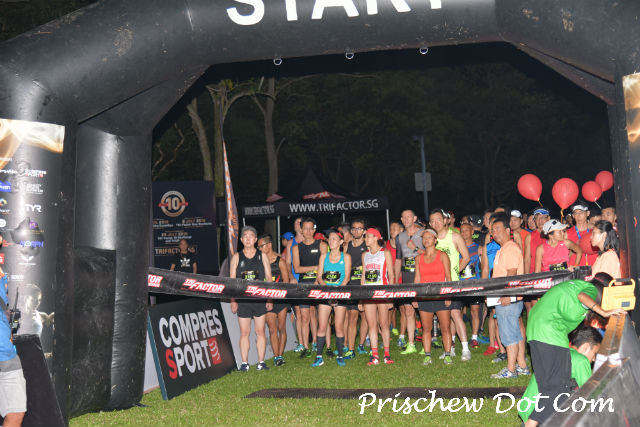
Participants can take part in one or more events, giving them the opportunity to swim, bike, run or do all three. This is a relatively new triathlon concept that gives athletes from various disciplines the chance to complete a triathlon.
To cater to different abilities, there had been a 21km and a 10km Run, as well as the
- Long (10.5km Run / 1.5km Swim / 10.5km Run)
- Standard (5.25km Run /1km Swim / 5.25km Run)
- Sprint (5.25km Run / 500m Swim / 5.25km Run) and
- Freshman (2.5km Run / 200m Swim / 2.5km Run)
distances available too, for the RunSwim events.
I took part in the 21km Run.
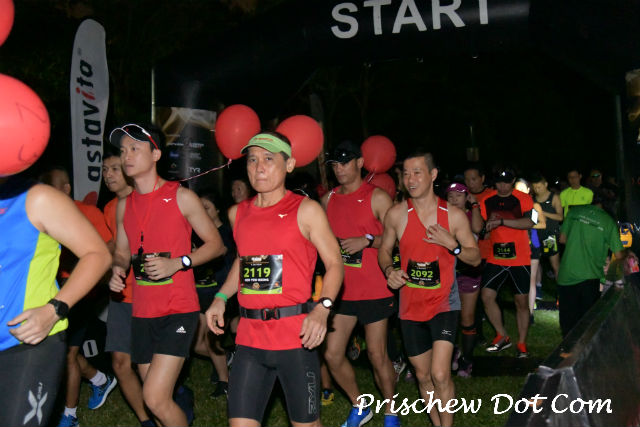
Having completed 23km at the Force of Nature Ultra just the day before, my legs had already been feeling a bit heavy this morning, when I woke up at about 4.30am – in order to get myself ready for the 21km run.
As such, I began to question my decision to opt to sign up for the 21km event at the TRI-Factor Run & RunSwim this year. I began to wish that I had signed up for the 10.5km event instead.
But then again, I reminded myself that training to run on tired legs would be good preparation for my Berlin Marathon in September, when I know that I will almost certainly be feeling fatigue in the latter stages of the marathon.
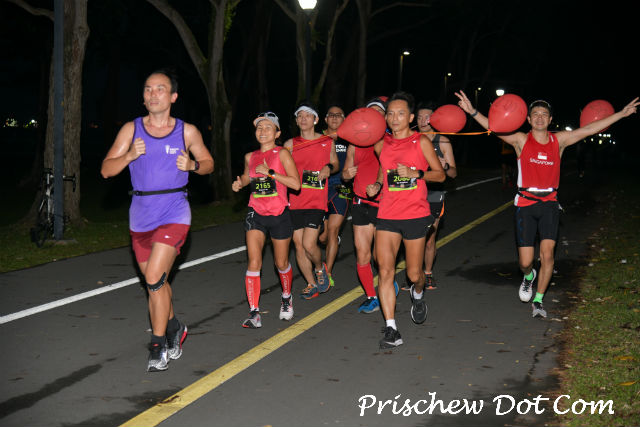
A lack of sleep didn’t help my cause this morning, either. I admit that I’d stayed up a bit too late the night before – to find out whether England would win their Fifa World Cup quarter-final against Sweden. (England won 2-0).
But nevertheless, I still managed to drag myself out of bed, got changed into my running clothes, and then I grabbed a MoBike and cycled down from my place to Carpark F2 – in order to warm up for the run. I reached the race site at about 5.40am. The 21km run was scheduled to flag off at 6am.
About five minutes before the flag off, the emcee then called the 21km runners into the start pen. Ours was the first category to be flagged off.
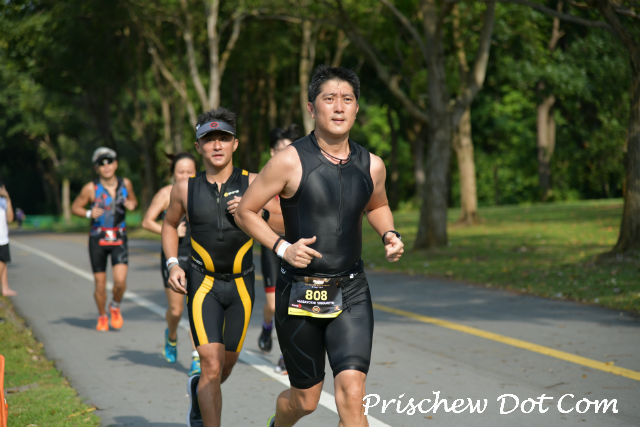
Prior to flag off, the organiser also notified us that the event medals had not arrived yet, but when they did arrive, they would then arrange to deliver the individual medals to every runner who had participated in the event.
For those who had wanted to take photos with a medal after the run, the organiser mentioned to us that there were sample medals available upon request.
We were then given a quick safety and route briefing, before being released.
The 21km run was then flagged off promptly.
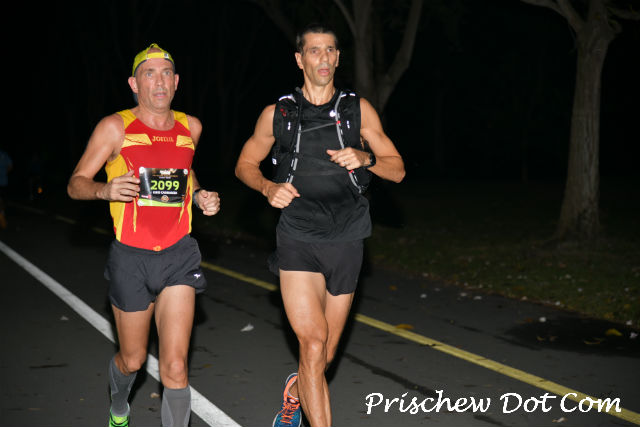
The route had been quite straightforward. The 21km runners were required to complete two loops of 10.5km, which took us from Carpark F2 towards Carpark C4, before heading all the way to Area G and then back to Carpark F2.
It was a familiar route to me because I run at East Coast Park often. So I knew what to expect in terms of the terrain and the elevation. This meant that I would not be getting any nasty surprises.
Said Kiko Carranza, 52, an accountant, “It was generally a flat route with not much hills. At the beginning though, there were some bends that broke my running rhythm. But that was fine because I could then get onto the straight and pick up the pace again.”
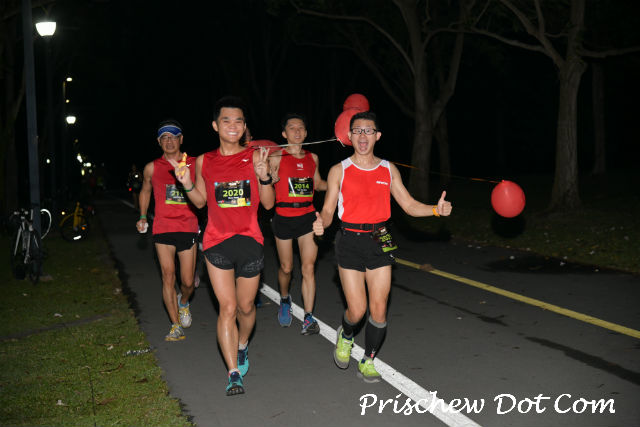
However it was quite dark at the beginning and also at certain sections of the route though, and there was not much lighting at the starting area too. This may have created a tripping hazard for runners.
Said Amanda Tan Wei Ling, 40, a corporate accountant at a bank, “The start point was a bit dark when we flagged off. Maybe there could have been a lamp post or some form of lighting there, as runners were bunching up together and this could have been dangerous.”
I had been initially hoping to run under two hours for this morning’s 21km – with the intention of treating this event as a pace training session for the Berlin Marathon.
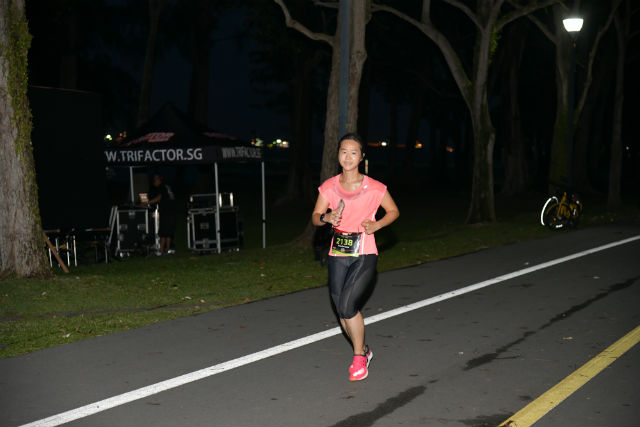
But a few hundred metres into the run though, I quickly realised that my body was not up to running at a 5min 40sec per kilometre pace and my heart rate was also higher than usual.
I guessed that this may have been due to the fact that my body had been still tired from the previous day’s exertions.
So then, before it was too late, I made the decision to slow down, in order to keep my heart rate more stable and instead focused on simply completing the run in a respectable timing instead.
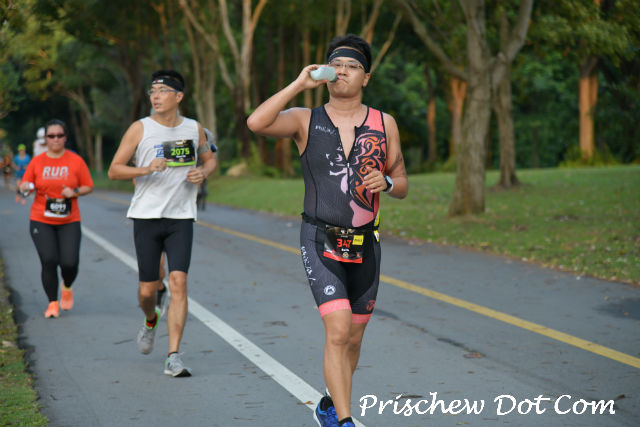
As I carried on running, I had felt that it was a beautiful day for a race – it was slightly cloudy and not too hot either.
So as I continued, I allowed myself to simply enjoy the nice breeze and at the same time, soaking up the sights and sounds of East Coast Park as the darkness gradually turned into daylight.
Said Kiko, “It was very nice. It felt very windy at the beginning and it was pleasant. It’s always nice to run at East Coast Park. I enjoyed it very much today, it was cooling.”
And added Amanda, “The weather was perfect. Compared to last year when it had been really warm, this year was great.”
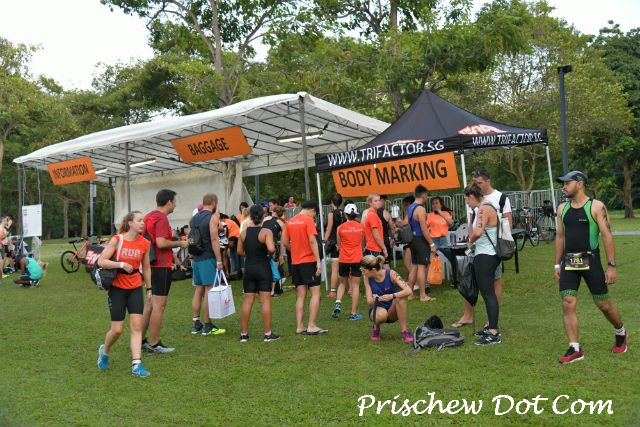
Along the 10.5km loop, there were three hydration points. Some were serving only water, but others had both water and Tailwind. I took some of the Tailwind whenever I saw it and it had tasted refreshingly ice-cold, so that was really nice.
Said Kiko, “The amount of water stations on the route were good.”
Due to the smaller crowds at this event as compared to some of the major running events in Singapore, this meant that there were also no bottlenecks or congestion issues during the TRI-Factor Run & RunSwim.
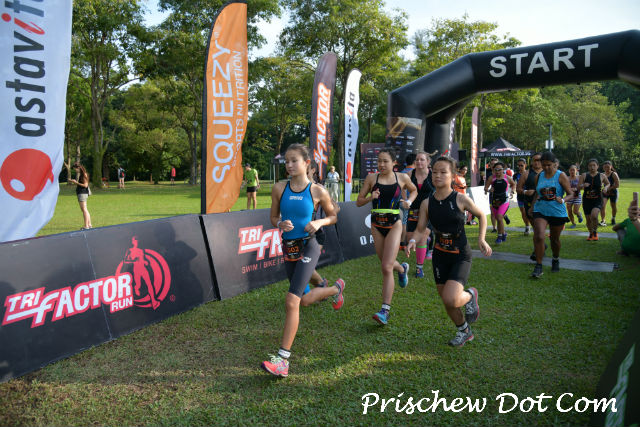
So I was able to run the entire way, without having my pace disrupted in any way at all. This was really good, because for those runners who may have been aiming for a personal best, then they need not worry about such issues.
But due to the smaller crowds in this race though, there had been some moments where I had been running all alone.
However there had been signages to tell runners exactly when to make a u-turn as well as marshals to inform runners in case they may have missed seeing the signages.

Said Kiko, “The presence of the marshals and the directions were good. This is always one of the good things about the TRI-Factor events.”
So this meant that even though there were no other runners around me to lead the way, I did not have any issues with making a wrong turn and getting lost. I am also very familiar with East Coast Park, so that had helped too, in terms of knowing where to go.
But I had quickly realised that there had been no distance markers along the route.
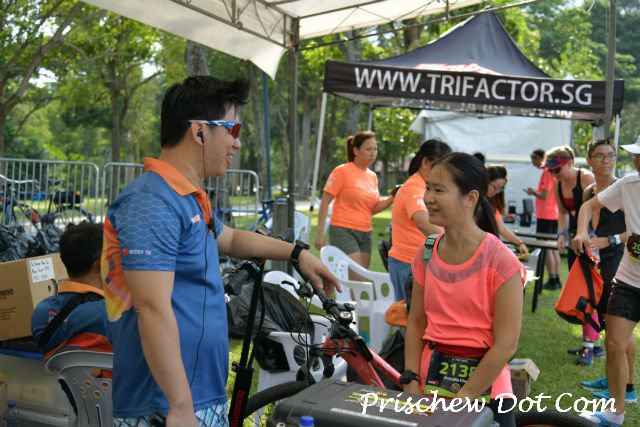
Fortunately for me, I had my GPS watch to notify me of my running pace and how much distance I had done, so I was able to keep track of my running.
Perhaps with the various distances of the Run and Run-Swim categories though, it may have been a little hard for the organiser to have placed distance markers on the course.
When I began my second loop, this had felt substantially harder than the first loop, because after running for 10.5km, my legs had been feeling heavier than ever, and I could also feel my legs threatening to cramping up. It was at this point that I’d really regretted having run 23km the previous day.
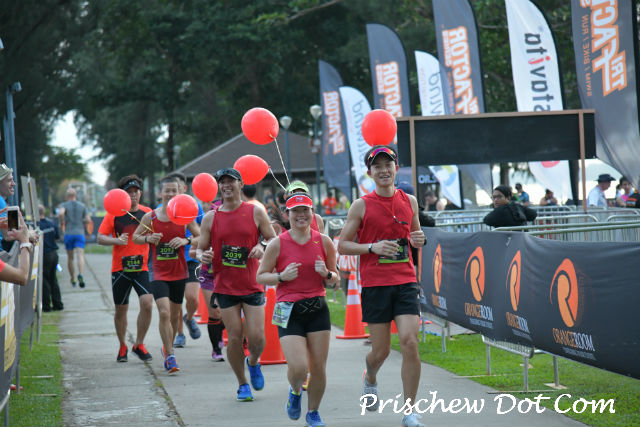
But I pushed on. Thankfully, my legs didn’t actually cramp. This was probably thanks to the salt that I had drunk in the morning before the run, as well as the salt capsules that I had brought along with me.
I told myself that perhaps I would get away with my crazy idea to take on two back-to-back half marathons within the same weekend.
When I had reached the final u-turn point and there was about 2.5km left to go after that, I grit my teeth and dug deep to finish the run, maintaining my heart rate in my steady zone and fervently hoping that the threatening cramp didn’t come.
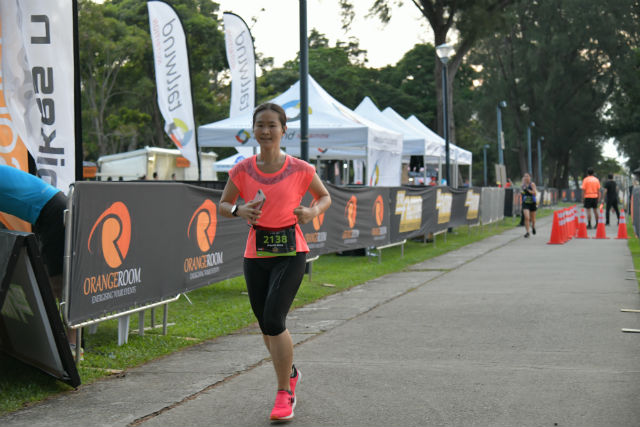
Eventually the finish line came into sight, and when I ran through the finish chute, I think that I was feeling more relieved than anything else, that the race was now over.
I noted that my GPS watch had measured 20.7km though, at the finish.
And said Kiko, “It was 400m short. If you are going for a personal best, that makes a big difference.”
He continued, “Last year at this race the distance was 22km. I had been going for a personal best last year, and ran my heart out, only to find that the route was long. So I thought I was going to cry.”
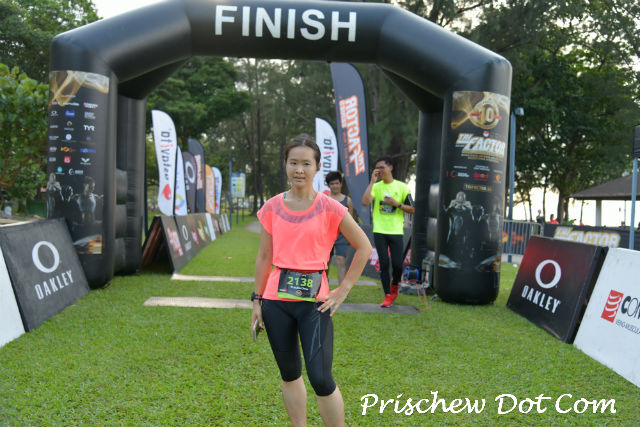
Upon my completion of the run, I had been greeted with just a bottle of water as a finisher entitlement. It had felt strange to not be presented with a running medal. But at least the organiser had fore-warned us of this already though.
Quipped Kiko, “I did not get a medal when I finished running, so I did not like that – now my wife is going to think that I have been with my girlfriend.”
However, I later received an email during the afternoon, from the TRI-Factor Run & RunSwim organisers – to say that my finisher medal for my TRI-Factor 21km Run would be available for collection at the TRI-Factor Triathlon race pack collection expo on 20 – 21 July.
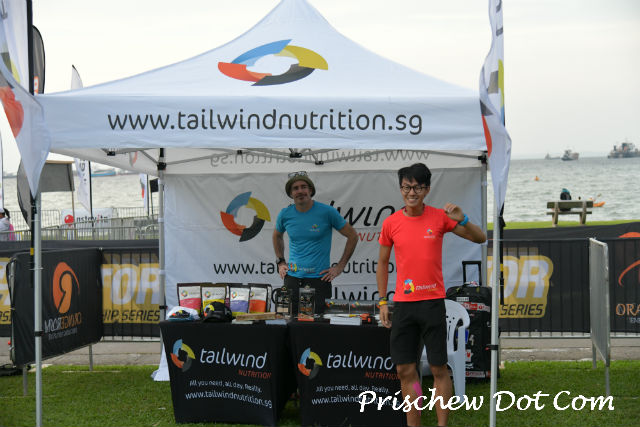
As I will be taking part in the TRI-Factor Triathlon, which is on 29 July, this is therefore an arrangement that suits me quite well.
After I was done with my run, I had stayed behind at the race village to chat to a couple of my running friends.
I noted that the post-race precinct had been rather basic but functional, with a few sponsor booths belonging to sponsors such as Tailwind and Pere-Ocean, as well as an information and a medical tent.
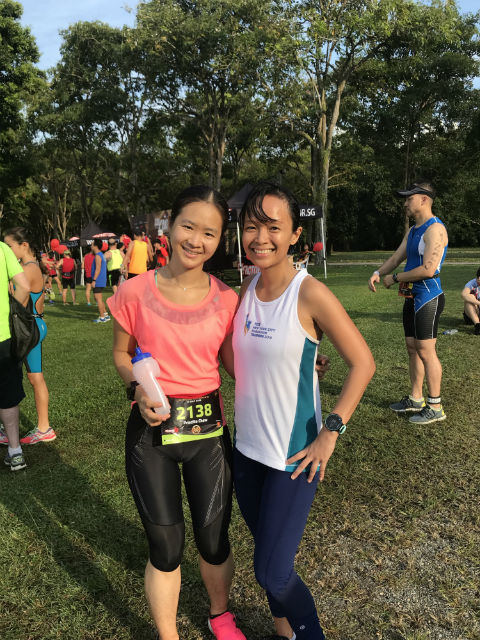
I took some of the Tailwind because I had been feeling quite thirsty. And the raspberry Tailwind flavour had tasted particularly delicious, too.
Participants could also get their official results from the information tent shortly after the race, too.
For me, when I had my result checked, I was surprised to find that I had been placed seventh – for my category and gender. I suppose that this means that by taking part in smaller races, you can get a good ranking even though your timing may not be so good.
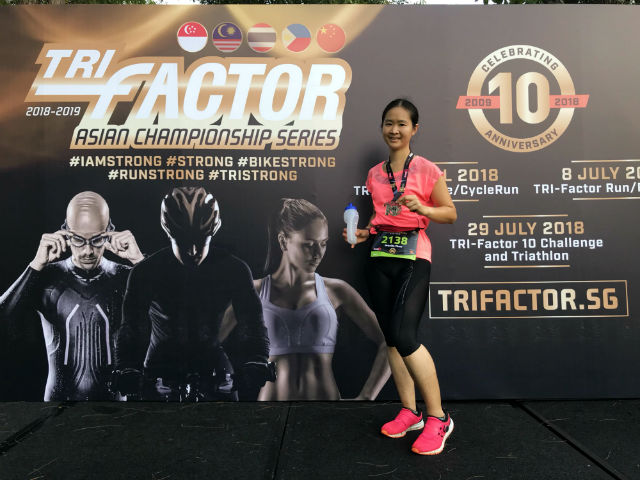
Before leaving the event site, I also had a quick look at the various categories of the RunSwim taking place to see how the races there were unfolding.
As the RunSwim categories had flagged off beginning from 7am onwards with multiple waves spread throughout the morning, this had been well underway once I had completed my run.
The RunSwim events, according to the participants who had taken part in it, had been well organised too, but the swim leg had been quite challenging at the same time though, because of the choppiness of the sea.
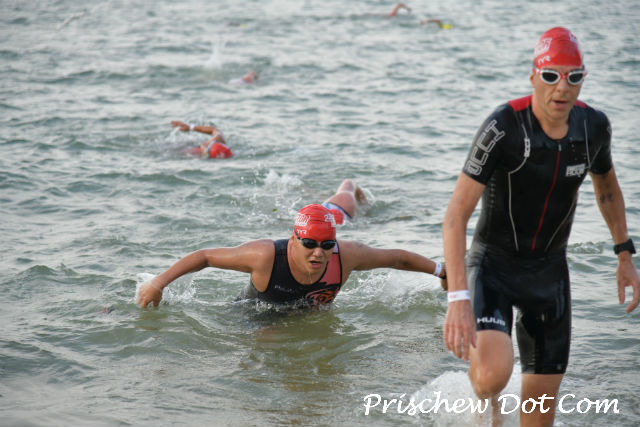
Said Alan Blakie, 35, a Project Manager in Financial Services, “The swim was horrible. It was quite choppy – that was the biggest challenge. The current though was not bad, a bit favourable on the way back. And it is always tricky to swim after you run, and then to be able to get back into a run after that, is always hard work.”
His sentiments had been pretty much shared by Ewin Teo, another Run-Swim participant. Said Ewin, 37, a Soldier, “The swim was really choppy today. I did not expect it to be so choppy; the distance was also slightly longer. There was no undercurrent but because of the top wind, this made it very hard to sight.”
I had initially been considering taking part in the RunSwim categories, but perhaps it was a good thing that I had opted to run only. This is because as swimming is not my strength, I would probably have struggled in the choppy waters.
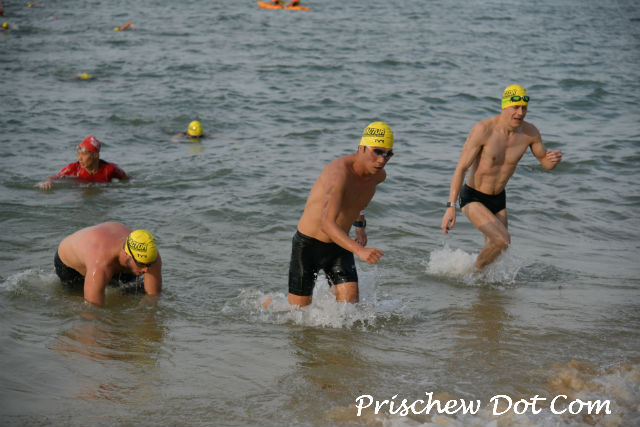
Otherwise, the swim had looked pretty straightforward and appeared to have been organised quite well, with the swimmers moving in the clockwise direction as indicated by the colourful buoys, and several canoes also present in the water in order to keep an eye out on the safety of the swimmers.
Continued Ewin, “And as for the run, it was good and flat – this is a familiar ground for all of us, so today’s run basically felt like a hard training session for me. The organisers also did quite well with the markings and the marshals stationed on the run route and so runners were kept on track throughout.”
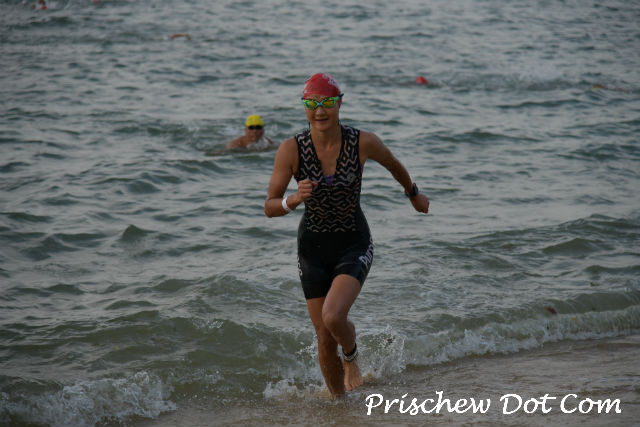
Overall, despite some shortcomings such as some dark sections along the route, participants at the TRI-Factor Run & RunSwim were generally quite happy with the event and how everything had panned out.
Said Alan, “In general, it was a well-run event and there is nothing to improve on because everything was good. I really enjoyed myself very much.”
And added Ewin, “Because the participation numbers were not so big, everything was controlled well, which was good. I think the number of participants was just nice.”
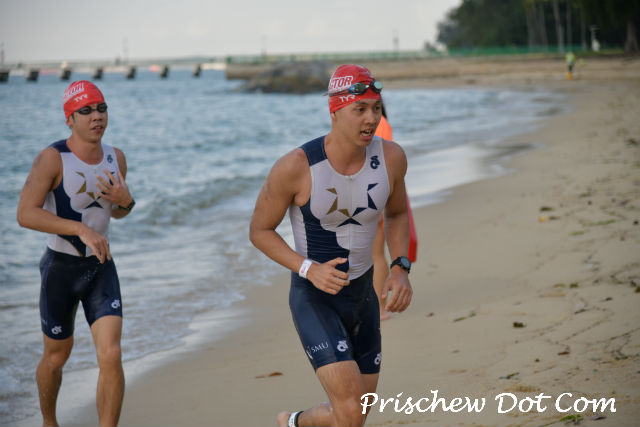
Ewin also continued, “If I really had to cite an improvement though, I would request that the organisers close the area down – but that is impossible because we are at a public park. They have done very well already.”
For me, I felt that it had been a simple but functional event, and I felt that everything had generally come together rather nicely too.
In fact, I’m already looking forward to being a part of the TRI-Factor Triathlon later this month – but I am praying that the sea will be calm during the event on 29 July, though.

Leave a Comment